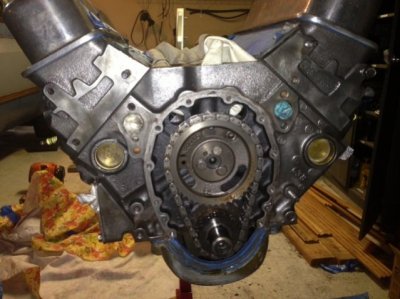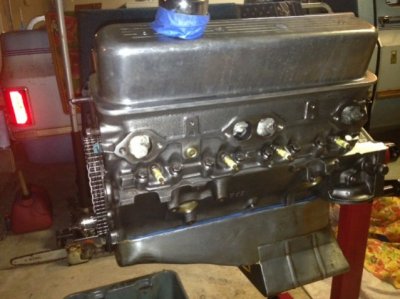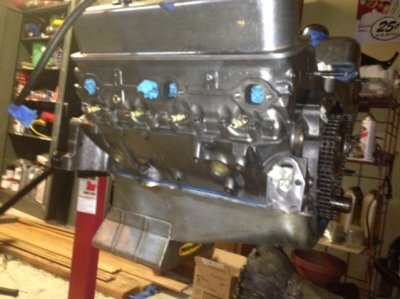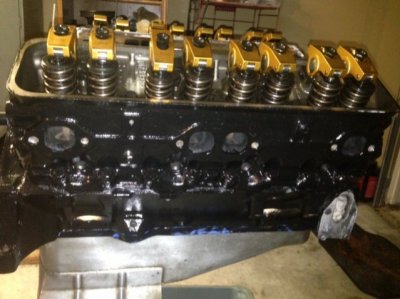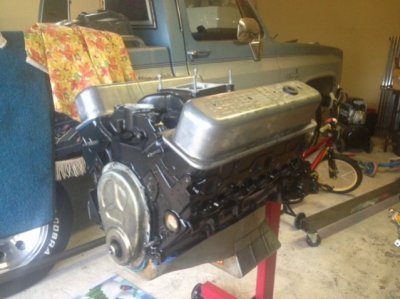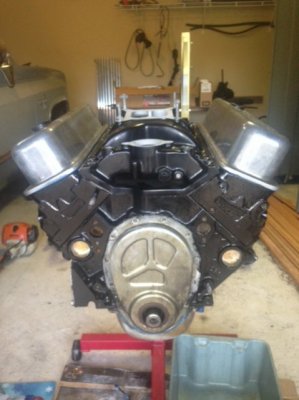You really should get them down to bare metal - you'll kick yourself in the ssa if you go through all this trouble and the coating starts to come off.
In those hard to clean places try:
1. Aviation grade paint stripper - Autozone, Pepboys, Advance, etc. to loosen up the old paint
2. Use these tools to dig out the paint and get the last corners clean:
A. Standard copper sweat fitting brush - Home Depot maybe $10:
You must be registered for see images attach
B. Pick and hook set - Harbor Freight - $1.99:
You must be registered for see images attach
C. A propane torch to burn any last residue out of the corners.
3. Wash down with gasoline using a stiff bristle brush. Let dry and wipe down with a rag soaked in acetone. Do this step over and over - until a wipe with a clean rag soaked in acetone shows no evidence of oil/rust/paint when wiped over the block surface. NOTE: This step takes the place of applying POR-15's Marine Clean product. It is just as effective and way cheaper.
4. When the block is clean and dry, apply the phosphoric acid (Metal Ready, Metal Prep or whatever they are calling it these days). Do this using a series of lightly misted on coats. Just as the previous coat starts to almost completely get dry, wet it down again.
Too much acid at once, will cause a flaky white coating that can actually hinder the bonding process.
When the acid is all dry, prepare all the surface that you
do not want the POR-15 to coat. Use spare 3/8" bolts coated with a light (very very light) film of Vaseline or grease to protect the female threads in the sides of the block. Mask off exhaust manifold and carburetor flange faces, Use old spare oil pans, timing covers, valve covers, etc to protect areas of the block that are to remain bare metal. Use a cheap oil filter to protect that flange. Old spark plugs get some Vaseline and are lightly screwed in. Use spare freeze plugs to cover the ones in the block (you have to hold them in place while you pain around the plug bore). Pipe plugs in the sensor holes.
Here are some images showing a 350 block, with cylinder heads (temporarily bolted in place) and intake manifold that have been prepped and are ready to coat with POR-15:
You must be registered for see images attach
You must be registered for see images attach
You must be registered for see images attach
You must be registered for see images attach
You must be registered for see images attach
You must be registered for see images attach
You must be registered for see images attach
You must be registered for see images attach
You must be registered for see images attach
You must be registered for see images attach
You must be registered for see images attach
You must be registered for see images attach
You must be registered for see images attach
Hint: heat your container of POR-15 in a hot water bath - till it's around 120F. The product flows much, much better when hot and a can goes a lot further.
Rather than a bristle brush or a foam brush, use some cheap sponges to apply the product. Cut them up into small (2" X 2") pieces. They help get into the small crevices and last a long time.
Be SURE that the humidity is below 85%. If POR-15 is applied in high humidity conditions, it will dry too fast and you
will get bubbles.


